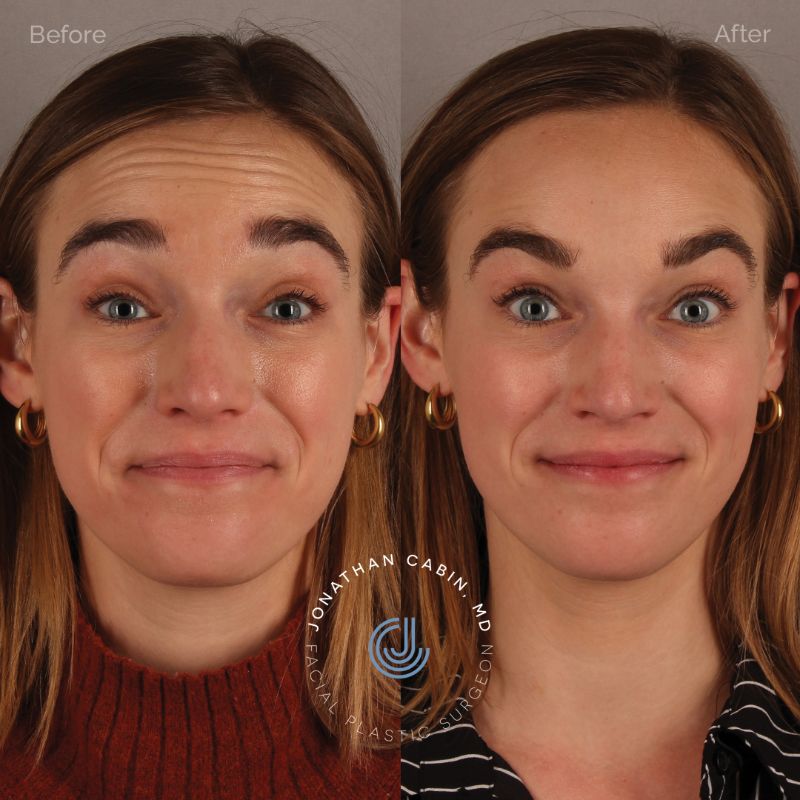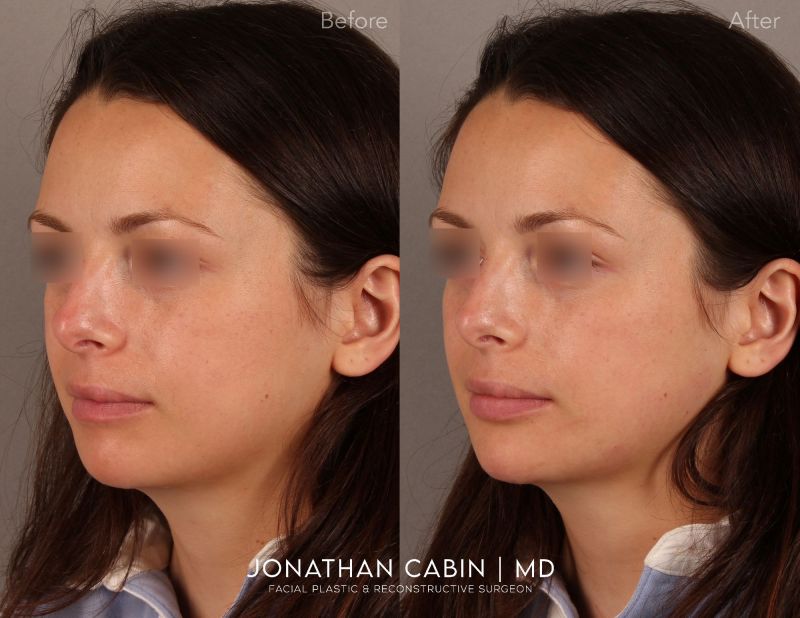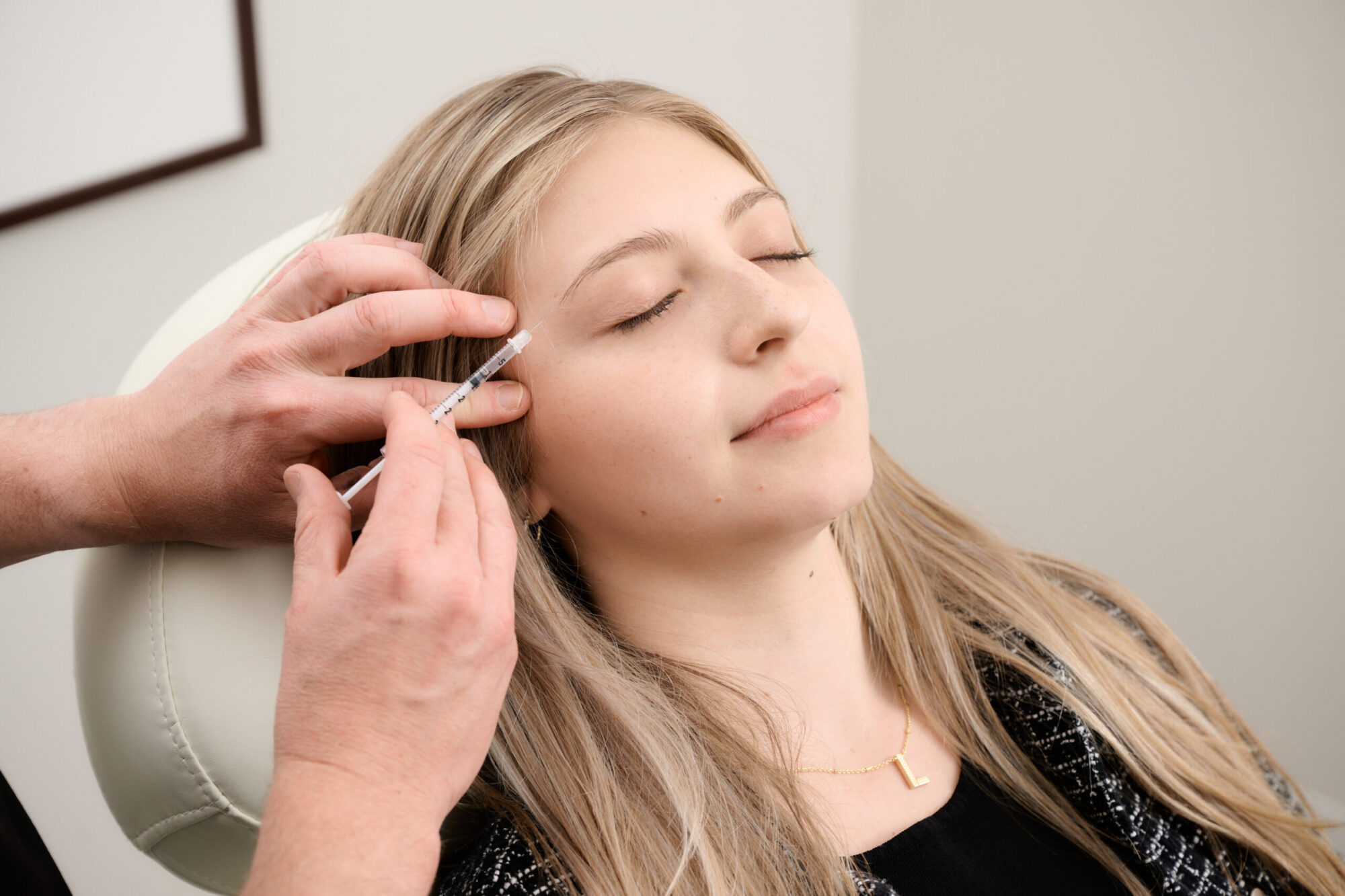As a nationally recognized facial plastic surgeon, no one knows how important it is to understand the nuances between procedures like Dr. Cabin. Treatments like Botox and fillers may seem to be similar, but the major differences between the two really matter for your results. Keep reading to learn more about the difference between Botox and filler and how our team can help you find the best option for your goals.
Understanding Botox
Botox is actually just one of several brands of refined botulinum toxin, a substance that temporarily relaxes facial muscles, effectively smoothing out wrinkles and fine lines. Its application in cosmetic procedures has gained widespread acclaim due to its non-invasive nature and proven efficacy.
Botox primarily targets dynamic wrinkles – those formed by repetitive facial movements. Common areas for Botox treatment include the forehead, around the eyes (crow’s feet), and between the eyebrows. By inhibiting muscle contractions in these areas, Botox helps in reducing the appearance of existing wrinkles and preventing the formation of new ones.
The Procedure
The procedure itself is swift and requires minimal downtime, making it a convenient option for individuals with busy lifestyles. A typical session lasts about 10 to 15 minutes, with results becoming noticeable within a few days and reaching their peak in about two weeks. These effects generally last between three to four months, after which the treatment can be repeated to maintain the desired outcome.
Botox’s popularity also stems from its versatility. Apart from cosmetic applications, it has therapeutic uses in treating conditions like chronic migraines, excessive sweating, and muscle spasms. This dual functionality underscores Botox’s efficacy and safety when administered by qualified professionals like Dr. Jonathan Cabin.

Exploring Fillers
Dermal fillers offer a distinct approach to facial rejuvenation. These injectable treatments, most commonly composed of hyaluronic acid, are designed to restore lost volume, smooth lines, and enhance facial contours. The versatility and immediate results of fillers have made them a highly sought-after option for those looking to reverse the signs of aging or enhance their natural features.
Unlike Botox, which relaxes muscles, fillers work by directly adding volume beneath the skin. This quality makes them particularly effective in treating areas that have the appearance of reduced volume, which are caused by actual soft tissue volume loss or the downward shift of soft tissue related to gravity. Common areas for filler application include the cheeks, lips, nasolabial folds, and under-eye hollows. By filling in these areas, fillers can create a more youthful, plump appearance and, in some cases, even appear to lift and contour facial features.
The Procedure
The procedure for administering fillers is quick, typically taking about 30 minutes, with results becoming visible almost immediately. The longevity of these results can vary depending on the type of filler used and the area treated, generally lasting from six months to over a year. The temporary nature of most fillers allows for adjustments over time to suit the evolving aesthetic preferences of the individual.
Fillers not only offer a solution for age-related volume loss but also provide an avenue for enhancing facial symmetry and balance. Dr. Jonathan Cabin’s expertise in this domain ensures that each treatment is tailored to the individual’s unique facial structure and aesthetic goals, resulting in a natural, harmonious appearance. This personalized approach underlines the importance of consulting with a skilled professional to achieve the best possible outcomes with dermal fillers.

Botox vs. Fillers: The Key Differences
Composition & Materials
Botox and fillers, while both used in cosmetic treatments, differ fundamentally in their composition. Botox is a purified form of botulinum toxin, which works by temporarily and partially paralyzing muscles of expression. In contrast, fillers are most commonly made from hyaluronic acid, a substance naturally found in the skin that serves to add volume and hydration. Hyaluronic acid is naturally broken down by the body and can also be reversed by the injection of the hyaluronidase enzyme.
Treatment Areas & Results
The areas of application and the results they yield also set Botox and fillers apart. Botox is primarily used to address dynamic wrinkles, such as crow’s feet, forehead lines, and frown lines, which are caused by muscle movements. Its effect is to smooth out these wrinkles by relaxing the underlying muscles. On the other hand, fillers are used to treat areas of volume loss and, occasionally, to improve deep folds and wrinkles. They are commonly applied to the cheeks, lips, and nasolabial folds, providing a plumping effect and enhancing facial contours.
Duration & Maintenance
The duration of the effects of Botox and fillers varies. Botox results typically last between three to four months, after which repeated treatments are necessary to maintain the same effect. Fillers, depending on their type and the area treated, can last from six months to over a year. This difference in longevity means that maintenance schedules for Botox and fillers will differ, with fillers generally requiring less frequent touch-ups.
Side Effects & Safety Considerations
Both Botox and fillers are considered safe when administered by experienced professionals like Dr. Jonathan Cabin. However, they can have different side effects. Botox may cause temporary bruising, swelling, or redness at the injection site. In rare cases, it can lead to muscle weakness or drooping in nearby areas. Fillers, while also having risks of bruising and swelling, can sometimes lead to lumpiness or asymmetry, which can be corrected by a skilled practitioner. There are also rare but serious risks of filler, including skin and visual changes.
Why the Differences Matter
Understanding these differences is crucial in choosing the right treatment. Botox and fillers, each with their unique properties and applications, offer diverse ways to achieve facial rejuvenation. Dr. Cabin’s expertise ensures that patients receive the most appropriate treatment to meet their individual aesthetic goals, whether it be smoothing wrinkles with Botox or restoring volume with fillers.
Choose the Right Treatment for You with Dr. Cabin
Making the decision between Botox and fillers can be complicated, but with Dr. Cabin there to guide you every step of the way, you’ll get the results you desire with the most effective option for your needs. If you’re ready to get started with treatment, it’s time to call our Arlington office to talk to a professional today.


